How Did A Tarpon Get On Michelangelo’s Sistine Chapel? And How Has This Been Kept A Secret?
- By: Joseph Simonds
- on
- Found In: Best Fishing Stories, Fishing News, Salt Strong
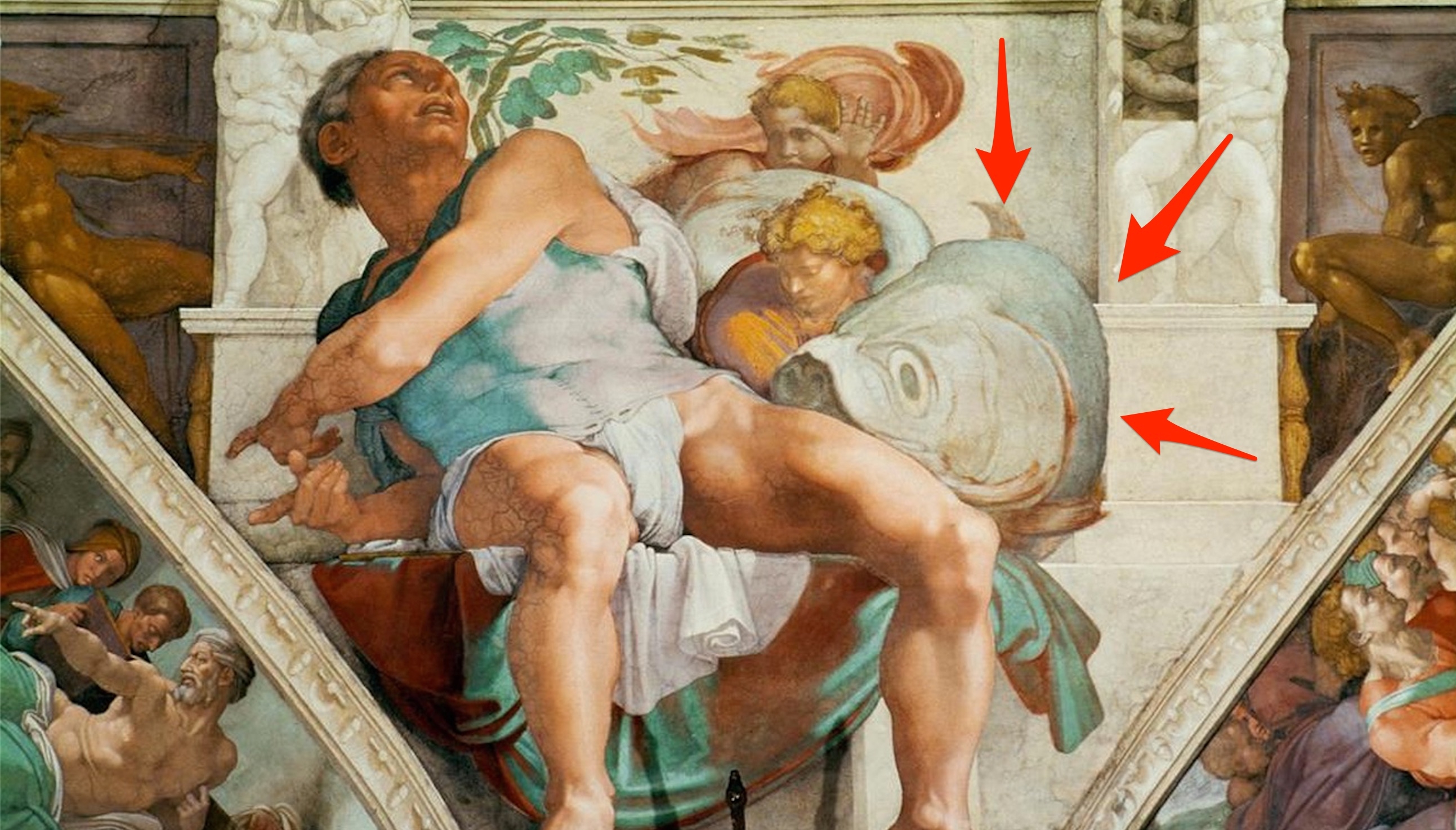
Holy Tarpon (literally).
And YES, this is 100% real.
This “Tarpon” is the same fish that has been on the Sistine Chapel in the Vatican City for over 500 years (the tarpon appears in the Sistine Chapels “Jonah and the Whale” story from the Bible).
And this is not some hidden image that is tucked away in the corner of the Sistine Chapel. The “Jonah” fresco is one of the main scenes that people talk about and admire when they go to Rome and visit the Sistine Chapel!
This must be the earliest painting or depiction of what we know as the Atlantic Tarpon, but more importantly, “How in the heck did it get on the Sistine Chapel!!!!”
Here were the questions going through my mind when I saw a very clear picture of a Tarpon on the Sistine Chappel for the first time just yesterday:
- Did Michelangelo know he was painting a tarpon on the Sistine Chapel?
- Was Michelangelo trying to tell the world about tarpon fishing on the Sistine Chapel?
- Does everyone else know Michelangelo painted a tarpon on the Sistine Chapel?
- Why did Michelangelo paint a tarpon instead of Jonah’s “Whale” on the Sistine Chapel?
- How did I miss this when I had a private tour of the Sistine Chapel a handful of years ago?
- Did the Pope approve a Tarpon on the ceiling of the Sistine Chapel?
- And how has this not made National News yet?
Now I don’t know about you, but I feel like this is like The Da Vinci Code for anglers… perhaps they will make a movie called “The Da Vinci Fishing Code”…
But in all seriousness, the BIG question remains, “What does it all mean”?
Let’s first explore why the Prophet Jonah was on the Sistine Chapel in the first place.
The Prophet Jonah
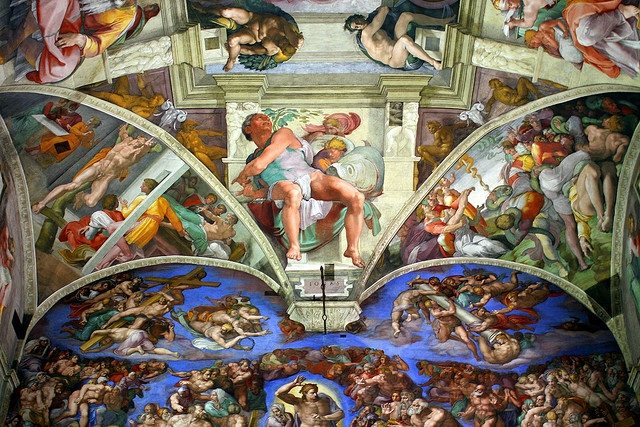
The Prophet Jonah is one of just seven prophets from the Bible’s Old Testament that made an appearance on the Sistine Chapel ceiling. And if you aren’t familiar with The Sistine Chapel, it is “where the Pope lives” in Vatican Palace, in the Vatican City (basically in Rome, Italy). It is also the place where the Pope is voted on, and considered one of the most reverent and holy places in the world.
If you ever went to Sunday School as a kid (or had a mother that taught religion studies like I did), you might recall the story of “Jonah and the Whale”.
Long biblical story short, Jonah tried to hide from God as he didn’t want to go to a placed called Ninevah. So he hopped aboard a ship to avoid his assignment from God. But there was a terrible storm once the ship as out at sea. The sailors on the ship tried everything to avoid the nasty storm, but nothing worked. Deep down, Jonah knew that God had caused the storm because of him, so he eventually asked the sailors to throw him into the sea to stop the storm (which they gladly did). Then the miracle happened: Jonah did not drown in the rough ocean because God sent had sent a whale (large or great fish… perhaps a monster Tarpon) to swallow Jonah. While in the large fish, Jonah prayed to God, and God caused the fish to return Jonah to the dry land after spending 3 days in the fish.
What is interesting to note, is the original Bible stories never actually mentioned the word “Whale” (or Tarpon for that matter) when the Jonah story was told.
The earlier versions of the Bible said that Johan was swallowed by a “Great Fish” or a “Large Fish”, and the term “whale” was not brought into the biblical story until the King James Version of the Bible called it a whale in 1611 (about 100 years after the Sistine Chapel was completed).
This is the image most of us grew up with in regards to “Jonah and the Whale”
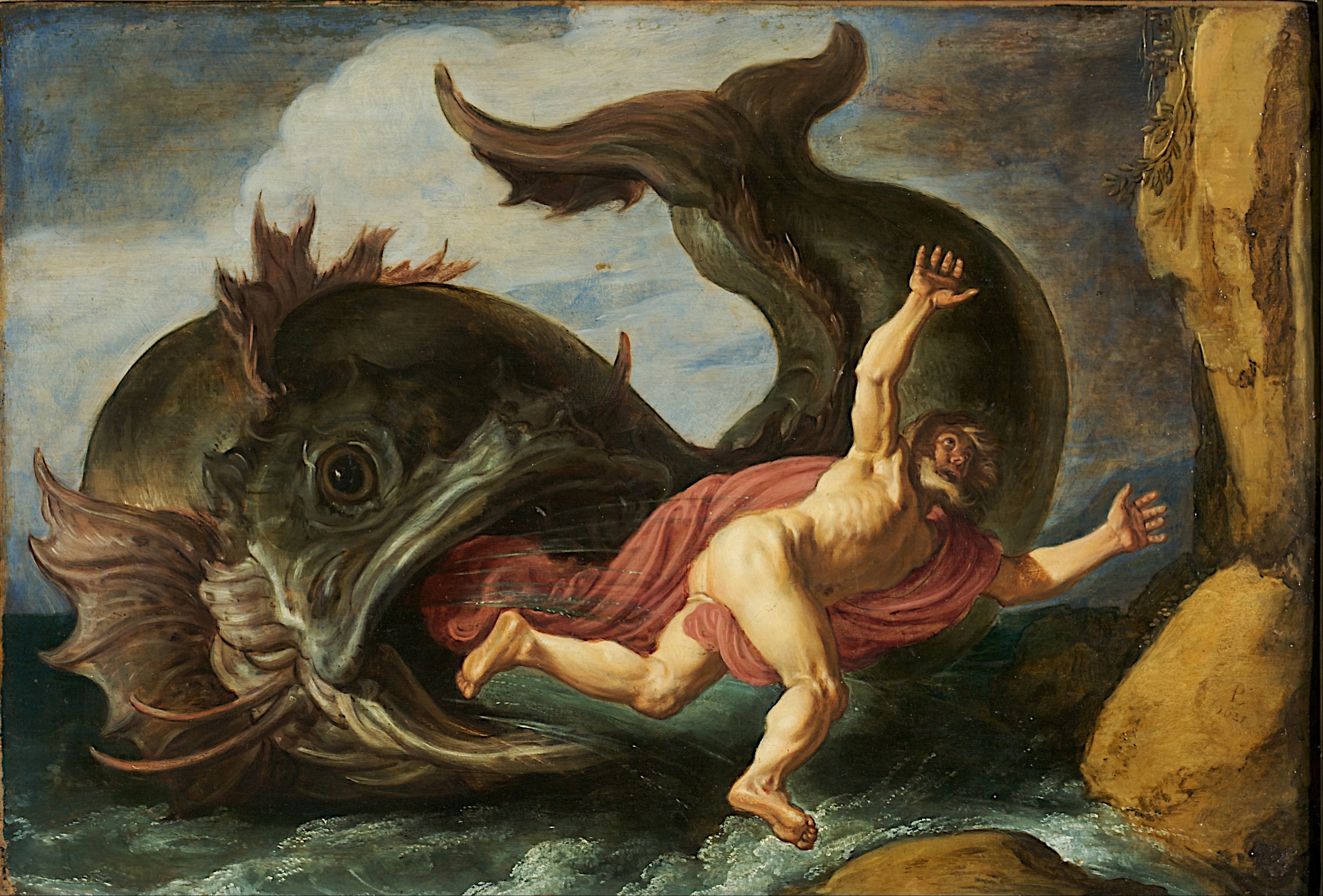
But this is the image that made it up on the most famous painting in the world on the ceiling of the Sistine Chapel
“Jonah and the Tarpon”
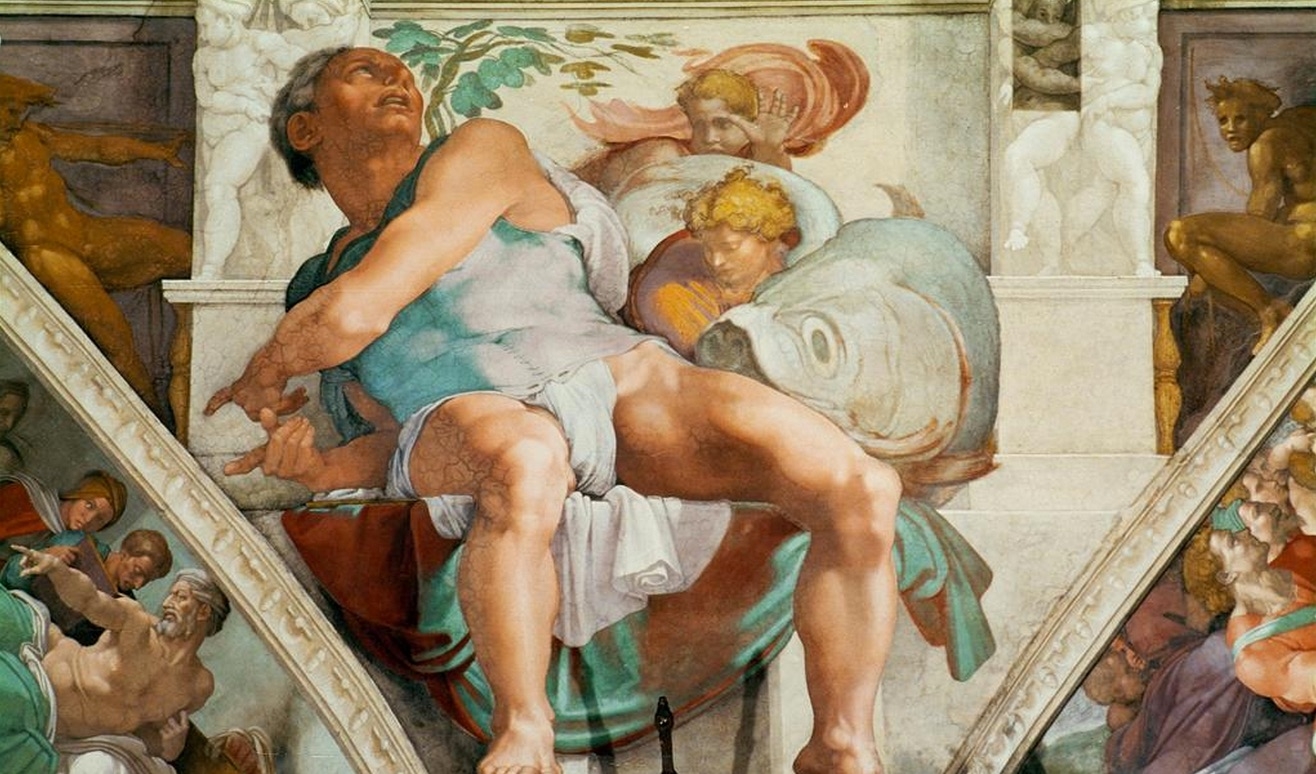
“In the Limelight”
The “Johan and the Tarpon” fresco is painted above the High Altar (aka in an important area of the Chapel), as Jonah is of prophetic significance in the Bible. So as I mentioned, this fish (which clearly looks to be a Tarpon) is one of the most recognized and talked about pieces of the Chapel. Yet, how is it that no one has made a fuss about this or has done any research on this?
There is hardly any commentary on the Sistine Chapel “Jonah Fish” online, and it seems very odd (and intriguing) that no biblical scholars or historians ever bring any attention to this. Especially when you consider this is one of the most famous “frescos” on the Sistine Chapel.
Do they know something we don’t know?
Did Michelangelo love tarpon fishing?
Was the Tarpon fish a gift from God?
Did Jonah get swallowed by a Tarpon?
What the heck!
The History Of The Tarpon
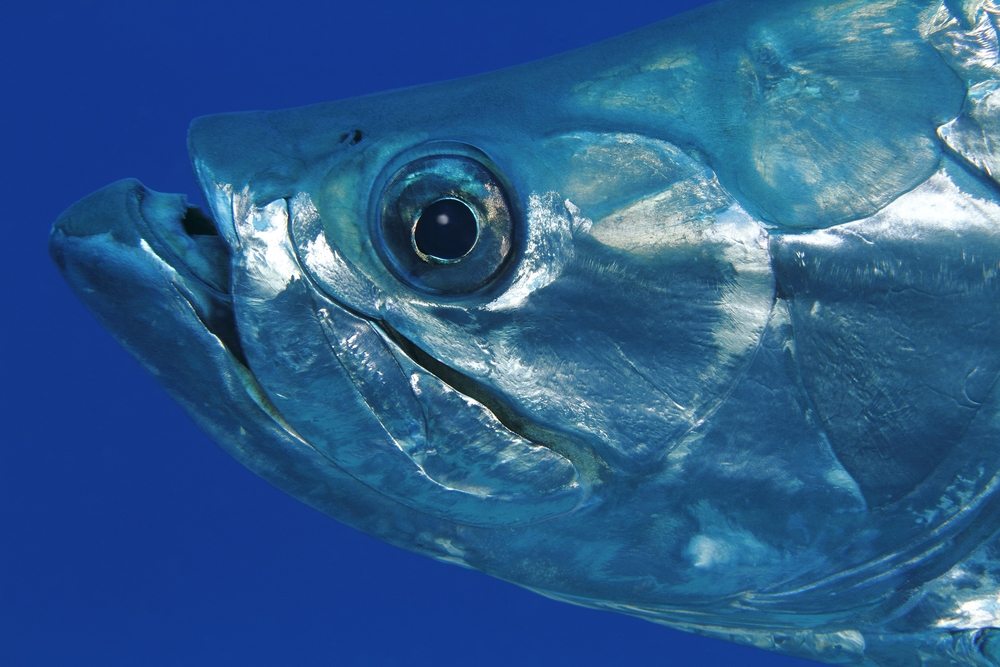
Tarpon have clearly been around for a very long time.
In fact, you will frequently hear tarpon anglers call the fish “prehistoric”.
And there are even a few different types of Tarpon depending on where you find them.
For instance, the Atlantic Tarpon that we catch off of Florida looks and grows just slightly different than the Tarpon found off of the coast of Africa. But the average angler would not be able to tell them apart. Same goes for the Tarpon off of Brazil and other countries in South America. There have even been documented tarpon as north as Ireland in the past, but no such reportings anywhere in history of a tarpon near Italy (or in the Mediterranean).
In regards to the different regions of Tarpon, they all look very similar in terms of their shape, mouth, and big bulging eyes (in fact, back in 1847, the French classified the Tarpon under the genus Megalops, which translates from Greek into “large-eyed,” a common feature of the tarpon).
But the big question is how was Michelangelo able to draw the tarpon so well?
The problem here is that the cold waters of the Mediterranean Sea (where Italy is) are not known to be a habitat for any tarpon. And even if European explorers had caught tarpon near North or South America, the tarpon carcass would have been a withered and rotten specimen by the time the slow-moving ship made it back to Europe (no freezers, Yeti Coolers, or quad 557HP engines back in the 1500s!)
Some people have suggested that Michelangelo was drawing an oxeye, which is a close relative of the tarpon and has been found in the Indian Ocean and Arabian Sea. But the problem here is that an oxeye only grows to a maximum of 40 pounds in weight, and the tarpon on the Sistine Chapel is certainly well over 100 lbs (and probably closer to 150 or 200lbs).
So did Michelangelo have a perfect picture that some artistic sailor/angler of the time had depicted after a journey abroad, or perhaps Michelangelo was a closet fisherman that wet a line during his art breaks?
What a wild mystery!
Here is a link to pretty much everything you could want to know about the history of the Tarpon in case you want to learn more about Tarpon.
Michelangelo’s Conversation With Pope Julius II
(Immediately after the completion of the 4-year making of the Sistine Chapel)

Pope: “Hey Michelangelo, I absolutely love it! It took you a few years longer than I thought it would, but it truly is a masterpiece”.
Michelangelo: “Thanks Pope. Although I am now partially blind and can’t feel my limbs, I am certain it was worth the four years of non-stop, painstaking work.”
Pope: “You know Michelangelo… there is just one little area near the High Altar I have been meaning to talk to you about… it’s just that… you know… that is a very special place in the chapel and I wanted it nothing shy of perfect…
Michelangelo: “Which scene sir? I took special care to make everything perfect… especially the main sections.”
Pope: “It’s the Jonah scene… I… ah… I just noticed the scene with Jonah and the huge, whale-like fish looked a little bit off… I was going to mention something to you back in 1510, but I figured you would continue to make the fish larger as you kept painting.
Michelangelo: “Sir, I don’t mean to offend you, but do you know anything about saltwater fishing? The Tarpon is the strongest, toughest fighting fish in the ocean. I would be willing to bet all of my gold lira that anglers will still be talking about the “Silver King” 500 years from now…”
Pope: “That is absurd Michelangelo. How can any fish last that long without dying out? And don’t you think the entire country will be in arms over this fish when they see that Jonah was supposedly swallowed by a 150lb Tarpon?”
Michelangelo: “Well, the painting is staying as is, Pope. I love the Tarpon and so do all serious anglers. Besides, no one will probably notice anyway… you know, with all of the naked people I threw in for distractions…”
Disclaimer: This conversation never really took place.
Theory: The Sistine Chapel Tarpon

After reading Norman Duncan’s Midcurrent article on this wild “Sistine Chapel Tarpon” discovery (the only real article about the mysterious Tarpon online), he gives his take on how a tarpon could have possibly made it on the Sistine Chapel.
Here is the summary of Norman’s theory on why there is a tarpon on the Sistine Chapel:
Back in the 1500s, they didn’t have rod and reels like we had today (more like cane poles, nets, and hand lines).
So when any real fishing was done using nets or hand lines. As you can imagine, a large tarpon would not only rip apart their nets and cause wild line burns in their hands when using a hand line, but the unbelievable tarpon aerial attack would be something that these fisherman would talk about for years (think about the first time you ever saw a large tarpon jump).
In particular, it wouldn’t be too far-fetched to believe that old salty fisherman would enhance their fishing stories to sound something like this when they came back at the mainland:
“You should have seen these rare and monstrous fish. They could jump clear up the heavens, they ripped apart our nets with their ferocious jaws and god-like strength, and they were big enough to swallow a grown man…”
I know it might seem tough to believe that fisherman would exaggerate a fishing story, but my guess is that it was just as common back then as it is today (but without GoPros and camera phones to help prove anglers wrong).
So when Michelangelo was commissioned to paint a “large fish” big enough to swallow Jonah, it is conceivable that the freshest stories in his head of a fish large enough to swallow man were of a Tarpon (keep in mind it wasn’t until 100 years after the Sistine Chapel was done that the Bible story changed to “Jonah and the Whale”).
And it is also not hard to believe that these anglers might have been able to bring back juvenile tarpon held in rudimentary “live wells” so that people could study them.
Then, all Michelangelo would have to do is scale the small tarpon to size…
Hmmmm…
Rare Sistine Chapel Video Footage
Here is some of only video footage of the Sistine Chapel that was taken during the recent 500-year reunion celebration. They do not allow flash photography or video in the Sistine Chapel, which is the reason for the lack of video and pics on the web.
Notice that the VERY FIRST scene that CNN focuses on is Jonah’s Tarpon! Crazy.
Or is it tarpon conspiracy…
Conclusion
FACT: There has been a Tarpon on the famous Sistine Chapel for over 500 years.
FACT: This fish on the Sistine Chapel is the first painting to ever depict what we know today as our beloved Atlantic Tarpon.
But the question still remains, did Michelangelo know that he was painting a Tarpon?
Had he ever seen up close?
Had Michelangelo personally landed a tarpon himself, or did he simply paint the most powerful fish he had heard someone describe?
The world may never know.
If you have any knowledge to bestow upon us in regards to this controversial “Jonah’s Sistine Chapel Tarpon”, please shoot us a message or leave a comment.
And as I mentioned, one of the most in-depth articles I have read on this subject of Jonah’s Tarpon on the Sistine Chappel was on Midcurrent.com by Norman Duncan.
Although I already shared the author’s personal theory as to why a tarpon made the famous painting above, the author (Norman) does give a very detailed description on the history of the tarpon and how it might possibly have tied in with influencing someone like Michelangelo. You can read it here.
P.S. – If you think your friends and angler buddies would enjoy this, please Tag them or Share it with them. It would mean a lot to me. You Rock! Pa-POW!
Related categories:
STOP WASTING TIME ON THE WATER!
Do what the “SMART ANGLERS” are doing and join the Insider Club.
Here’s what you’ll receive today when you join:
- Weekly fishing reports and TRENDS revealing exactly where you should fish every trip
- Weekly “spot dissection” videos that walk you through all the best spots in your area
- Exclusive fishing tips from the PROS you can’t find anywhere else
- Everything you need to start catching fish more consistently (regardless if you fish out of a boat, kayak, or land).




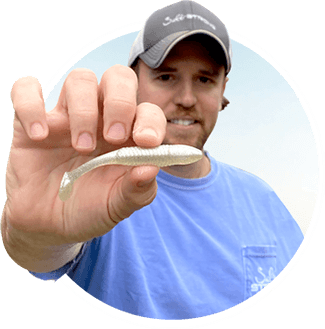
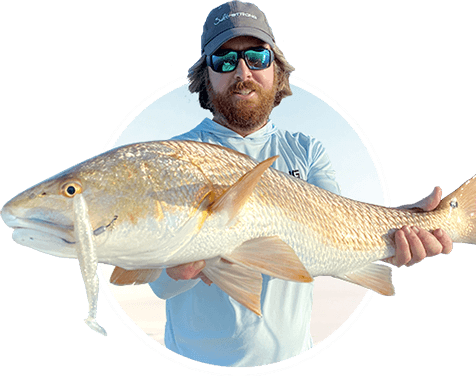


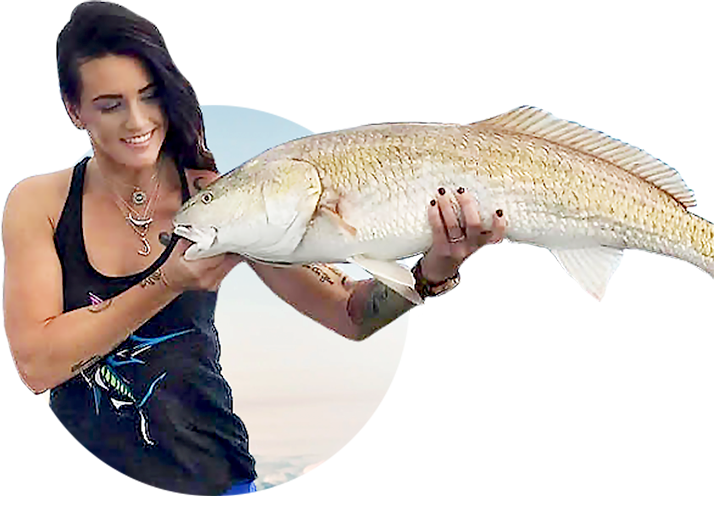

Best history of the tarpon!
Who knows if this is truth, but I’ve read that seafaring trade ships of the Mediterranean would round the northwest coast of Africa where they may well have witnessed — and quite possibly captured — Tarpon. Historians speculate that Michelangelo first encountered these monster fish being unloaded from these ships, bound for market. Nonetheless, it’s pretty cool that our favorite fish (here at Silver Kings, anyway), peers down upon us from the heavens of the Sistine Chapel!!!